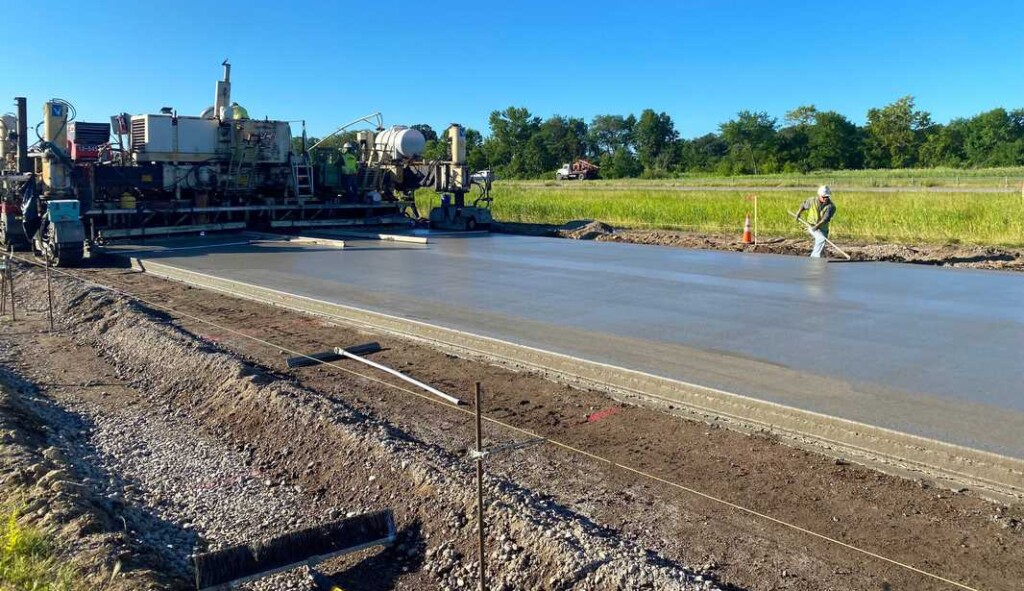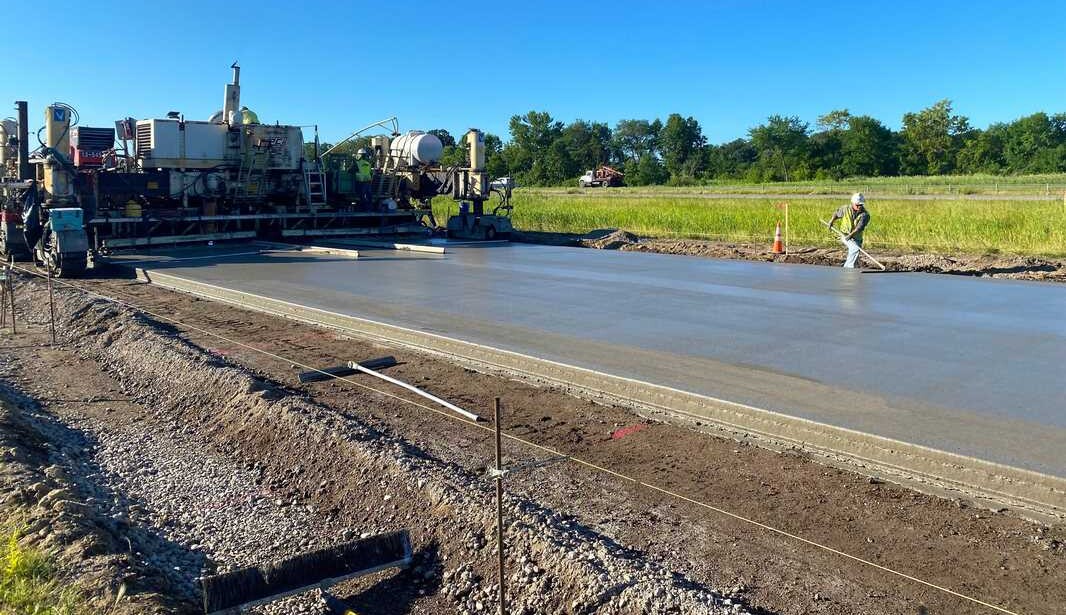
A private-public partnership has paved a section of Minnesota road with an experimental low-carbon concrete mixture that resulted in greater strength and lesser cement use, saving money and carbon.
Concrete and its most important ingredient, cement, is one of the most carbon-intensive industries on Earth because it’s used so often in construction. It has virtually no parallels for the ease of use, versatility, and structural properties, but emits about 0.6 tons of carbon per 1 ton of cement mixture produced according to Imperial College London.
US firm Carbon Upcycling Technologies, in collaboration with the Minnesota Department of Transportation (MnDOT) has successfully completed a three-year study on the use of the company’s low-carbon cement in highways.
The results highlight Carbon Upcycling’s ability to be a drop-in solution for reducing carbon-intensive cement in concrete, while saving money and making stronger roads.
The work in the study was carried out by Sutter Engineering and sponsored by the National Road Research Alliance (NRRA). It rigorously tested 16 unique concrete mixtures in real-world conditions on an active Minnesota highway to identify options that could reduce the carbon footprint of infrastructure without sacrificing strength or durability.
Completed in early 2024, the study aimed to find materials that could significantly lower the carbon footprint of concrete paving without compromising durability. Carbon Upcycling’s CO2-enhanced mix achieved a 12.5% reduction in cement content while matching the workability of traditional concrete, allowing seamless handling, placement, and setting times for construction crews.
“Infrastructure is the very foundation of a sustainable future, and at Carbon Upcycling we’re committed to creating materials that support this vision while establishing a secure, stable North American supply chain,” said Apoorv Sinha, CEO of Carbon Upcycling.
“Our collaboration with the Minnesota Department of Transportation highlights how Carbon Upcycling can transform captured emissions into local materials that strengthen our infrastructure. By focusing on resilience and sustainability, we’re contributing to a vision where our essential structures are clean and built to last.”
INFRASTRUCTURE INNOVATIONS: Sweden Is Trying to Build a Whole City Borough Out of Wood to ‘Show What is Possible’
Additionally, their mixture increased strength by 28% measured at 28 days, and 32% stronger at 56 days, compared to the advanced control concrete.
These findings provide valuable data to guide future low-carbon infrastructure projects across North America, as the seamless integration into existing workflows.
“Carbon Upcycling submitted a very impressive mixture design to the trial,” said Larry Sutter, MnDOT’s Principal Engineer and the project’s technical manager. “Their material not only achieved the highest reduction in cementitious content among all submissions but also demonstrated remarkable strength.”
REDUCING CARBON FOOTPRINTS: This Self-Healing Cement Automatically Fills Any Cracks That Form, To Save Energy and Money
By embedding CO2 and reducing the reliance on portland cement, Carbon Upcycling’s technology addresses one of the concrete industry’s most pressing challenges—lowering its carbon footprint as global demand for cement is expected to double by 2050. This project data will be invaluable as the industry works toward its 2030 CO2 reduction targets.”
SHARE This Frim’s Great Contribution To A Low-Carbon Future…





















I live in Minnesota and am thankful for this reduction on highways of carbon footprint. Thank you to all!
Good Works.